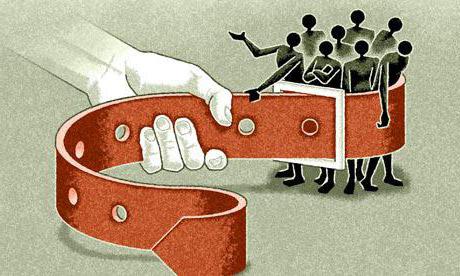The average monthly wage acts as one of the key elements in the field of labor reproduction. It is the main source of income for people employed in enterprises. Its fluctuations have a direct impact on the quality of life of able-bodied citizens, the position of each individual in society. Next, the concept of nominal and real wages will be considered. The article will also present the main factors that influence their level.

Nominal and real wages
When enrolling in the staff of the enterprise, the employee enters into an employment contract. It indicates the conditions of his future activities, duties and rights. The contract also establishes the remuneration that he will receive for the performance of production tasks. The nominal salary is directly the money that is accrued to the specialist based on the results of his professional activity. With the funds received, he must purchase food and other necessary consumer goods. In addition, with remuneration, a citizen deducts taxes, pays for utilities, education of children, use of transport, and other public goods. As a result, the employee of the enterprise remains a certain part of the funds, which he can turn into his own savings. A real salary is a combination of the costs of services and goods that a worker can purchase at the current price level for remuneration received for activities in the enterprise after deducting taxes and other deductions from it.
Urgency of the problem
If the cost of services and goods that are necessary for the consumption of the worker and his family remained unchanged, then the index of real and nominal wages would show the real state of things. That is, by changing the first indicator it would be possible to judge the increase or decrease in the volume of those benefits that a citizen can purchase with the money received at the enterprise. However, in modern market conditions, prices for services and goods are subject to constant fluctuation. As a result, the real and nominal wage index is greatly distorted. The same indicator for the first category reflects different values of the second.
Consider an example. For example, the nominal salary increased over the previous period by 7.2%, and the real - by 3.1%. We find how much the indicator of the cost of living has changed. The desired value is measured by the price index for consumer services and goods. The ratio between the given values is determined as follows:
real salary index = nominal index X 100 / index of the cost of services and goods.
Using this formula, you can derive a scheme for calculating the prices of commodities:
index of cost of services and goods = index of nominal salary X 100 / index of real salary.
In this way:
price index = (100 + 7.2) × 100 / (100 - 3.1) = 107.2 × 100 / 96.9 = 110.6%.

Change Specifics
The dynamics of nominal and real wages depends on the price level. A change in the latter is directly proportional to fluctuations in the cost of services and goods included in consumer basket. At the same time, some factors have an increasing, while others have a decreasing effect. Imbalances arise due to various reasons. These include, in particular:
- The growth of unemployment and the pressure of unemployed citizens on the labor market.
- Decrease in demand for labor resources during an unfavorable state of affairs.
- Increase in the share in the labor reserves of low-paid categories (low-skilled specialists, youth, women, representatives of dominant national minorities) and so on.
Under the influence of these factors, nominal and real wages are reduced along the chain.

Labor exploitation
To ensure additional involvement of specialists in the enterprise, different methods are used. In particular, real wages are artificially reduced. This is achieved by increasing the cost of consumer goods, utilities, tariffs for the use of other public goods. For greater effect, taxation is increased. Thus, in conditions of constant inflation, nominal and real wages are at too different levels. To remedy this situation, the working population seeks to increase their remuneration for activities in the enterprise.

"Moving scale"
This principle is that the basic rates at which the average monthly wage is charged are periodically reviewed in accordance with fluctuations in the official indicator of the cost of living of the population. This value expresses the level of growth in prices for services and goods for a specific period of consumption. In capitalist countries, to weaken this principle, this indicator is falsified, wage growth associated with an increase in the value of goods is slowed down, and other methods are used. As a result of these measures, nominal and real wages have significant differences in magnitude. A decrease in the second can take place not only in the case of a constant, but even with an increase in the first.
The law of increasing needs
Among the main conditions for raising real wages can be called an increase in the volume of needs of the working population. It is noted in the process of improving productive forces, a qualitative change in the level of cultural and social development. Lenin called this phenomenon the law of increasing needs. Its implementation under capitalist conditions is not carried out automatically, but as part of a tense confrontation between workers. Busy people need higher nominal salaries. This will ensure the satisfaction of all its needs, which are due to the expansion of the social and historical component of labor reserves.

Increase factors
The size and dynamics of wages, as well as its ratio with the level of existing prices, have a direct impact on the quality of life of able-bodied citizens. It acts as a transformed form of the value of human capital. Labor is a specific commodity. The factors of increasing its value include the growth of specialist qualifications and the intensity of his activity. A diminishing circumstance is an increase in productivity. Within the framework of scientific and technological progress, there is an increase in the complexity of labor. This factor, due to a change in the nature of the production process, requires a significant improvement in the qualifications of specialists and the intensity of their activities. This, in turn, causes a significant increase in the cost of reproduction of labor resources and, consequently, their cost. It should be noted that continuing education is an increase in labor productivity. This factor is constraining to increase labor costs. It follows that continuing education has a conflicting effect.

How are fluctuations in labor costs expressed?
Nominal salary is expressed in cash. Its value reflects the movement of consumer prices. But they act only as a monetary expression of the value of goods. At this price, a constant deviation is characteristic.The movement of its value tends to exceed value. In this regard, the nominal wage itself cannot show the dynamics of the cost of labor. It also does not show the number of services and goods that the worker receives. All these values can only be seen by real salary.
Salary reduction
Overpopulation is the main factor in this process. A huge number of unemployed significantly destabilizes the situation. Citizens offering their labor allow them to purchase it at a price that is significantly lower than its value. Along with this, the level of weekly real wages is reduced. This is due to the fact that entrepreneurs buy labor at a lower price (compared to higher prices) than before. Average annual rates are also decreasing for other reasons. The main one is the fact that during most of the year a citizen was not employed at all, which means that he did not receive any remuneration for his professional activities.

Conclusion
National differences in the level of nominal and real wages that have occurred in capitalist countries have been significantly leveled over the past decade. In most countries, these figures are close, and in some countries have already exceeded the values noted in the United States. The opposite has been seen in developing countries. For example, in Nigeria, Egypt, Bolivia, the daily payment is 2.5-3 times less than the hourly rate for the working people of the capitalist states. This situation provides monopolists with unique opportunities. For example, using their capital, industrialists can maneuver in a crowded labor market and bribe certain categories of workers.

